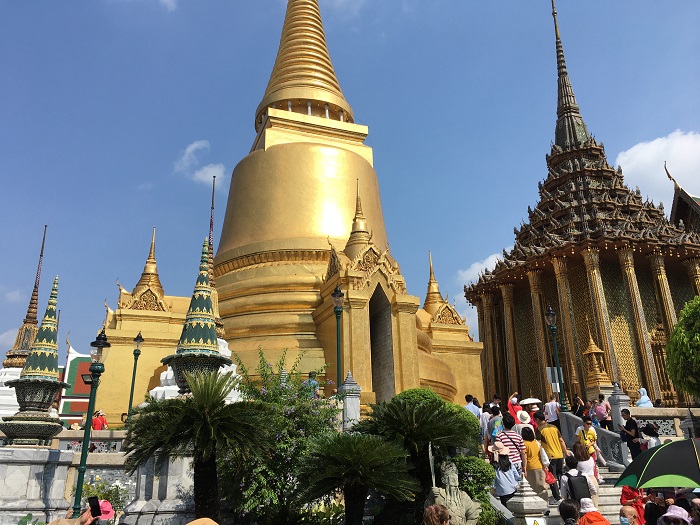
Join us for a virtual tour of Bangkok’s most important temple complex, housing the sacred Emerald Buddha.
NOTE: “And now for something completely different.” Thor and I made our first trip to Asia — the beautiful country of Thailand. We were lucky to squeak through the pandemic flight closures this January/February of 2020 as we returned from our three-week trip. Since more travel has now become a distant prospect, we hope you’ll take a virtual vacation with us in the following weeks. (This blog series started on June 13.)
As you may recall from last week’s post, Thor and I took the “river bus” from our hotel to the closest station to Wat Phra Kaeo.
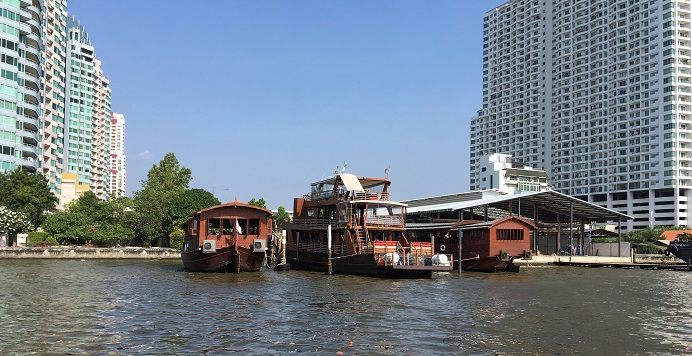
The morning was already heating up as we threaded a labyrinth of vendor stalls, following the dense crowds. We were really glad to purchase two shade parasols to fend off the fierce sun. This vendor was adding to the heat by burning joss paper for luck or to honor a recently deceased — there has been a big Chinese influence in Thailand on the development of culture and religion. Since our visit coincided with Chinese New Year, we were surrounded by Chinese visitors to the shrines and celebrations.
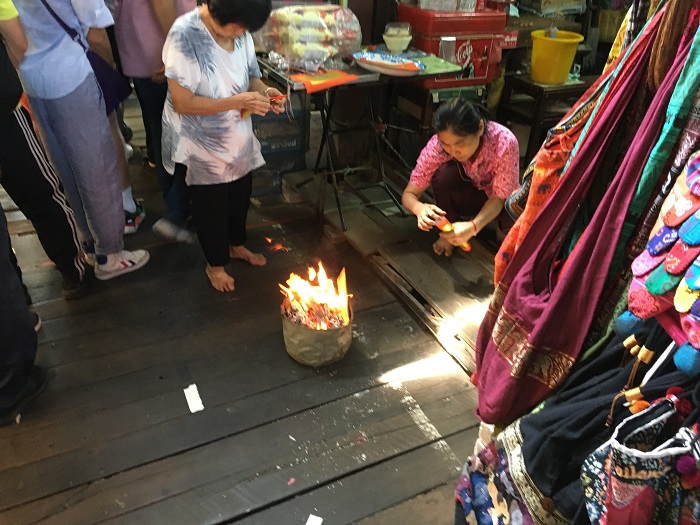
A welcome bit of green openness outside the wat walls, before we plunge into the crowd at the entrance. There are wats everywhere in Thailand, and typically they are a walled complex that serve as Buddhist monastery, temple, and community center:
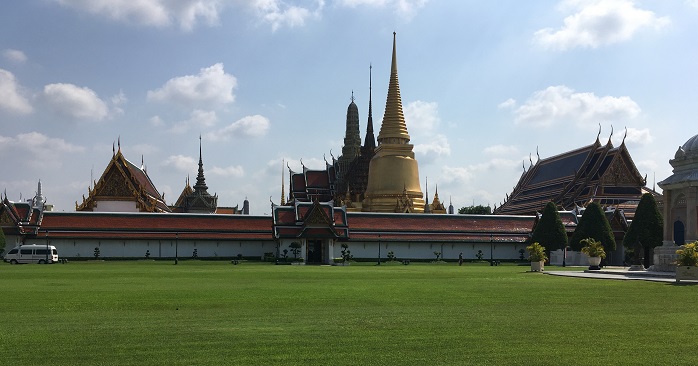
The gold, bell-like solid structure is a chedi, and these contain a Buddha relic or a king’s ashes. The steeply-roofed structures can be temples, libraries, or a wihan (assembly hall). The distinctive curved and pointed roof finials are called cho fa or “tassle of air,” a stylized garuda, half man and half bird. In addition to the Chinese influence in art, architecture, and religion, there is a very strong influence of Hinduism woven into the Theravada Buddhism practiced by 90% of the population.
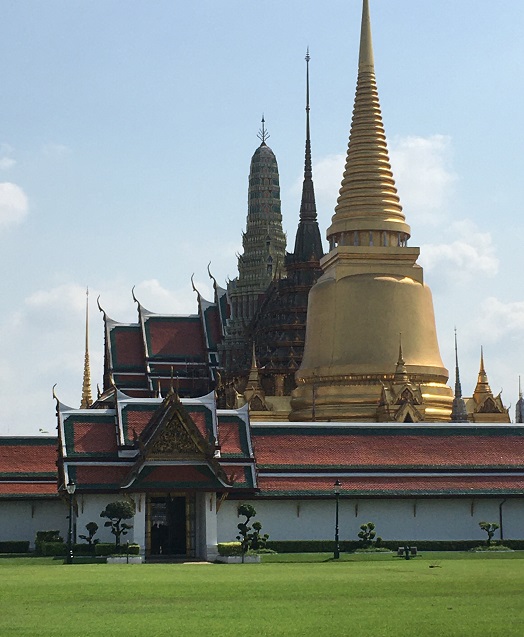
This golden chedi is said to contain a piece of Buddha’s breastbone. Pilgrims “earn merit” by purchasing thin sheets of gold foil to press onto sacred shrines and statues. Here we join the throng heading toward the shrines. The tall white structures along the perimeter are called prangs:
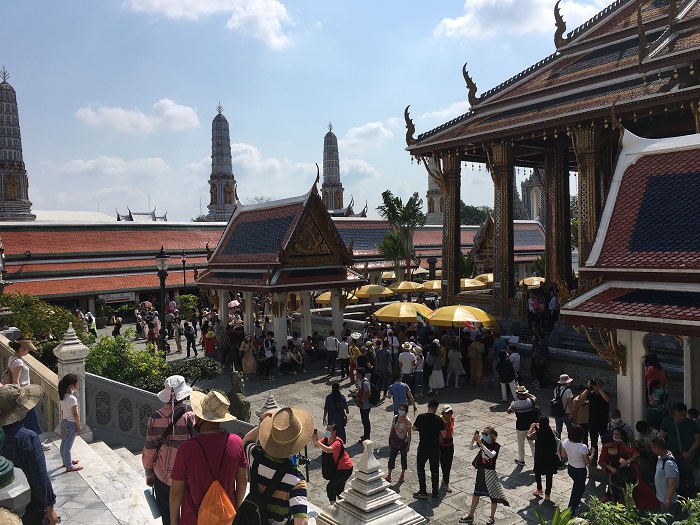
Every visitor is scrutinized for proper, respectful attire before being allowed to enter. Shoulders and legs must be covered (though there was some cheating after entrance). Thor and I brought pareos to wrap around our waists, but Thor was found to be showing too much calf (too darn tall!), so had to buy the longest pair of pants they sold. Nordic Thor does not handle such heat well, but he persevered, and here is the ensuing ensemble:
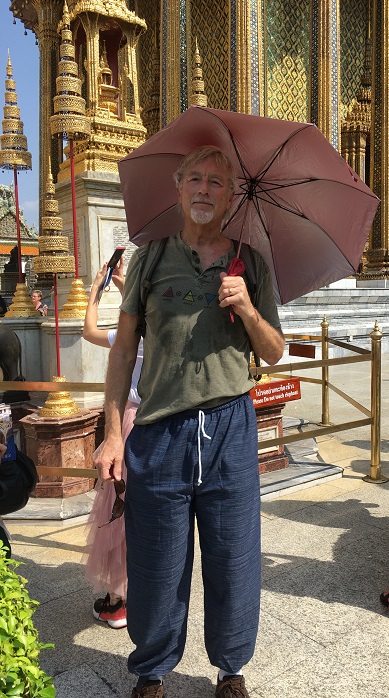
Colorful demons guard each entrance to the wat. The green one symbolizes the king of the protective demons:
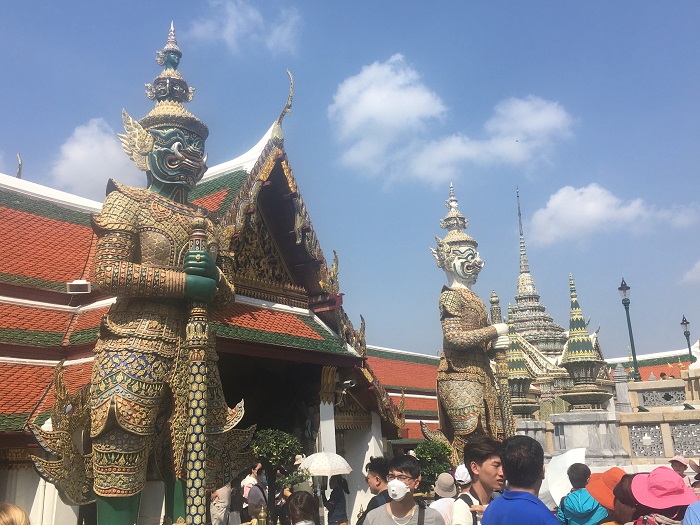
Meeting approval, we work our way past the gleaming golden chedi:
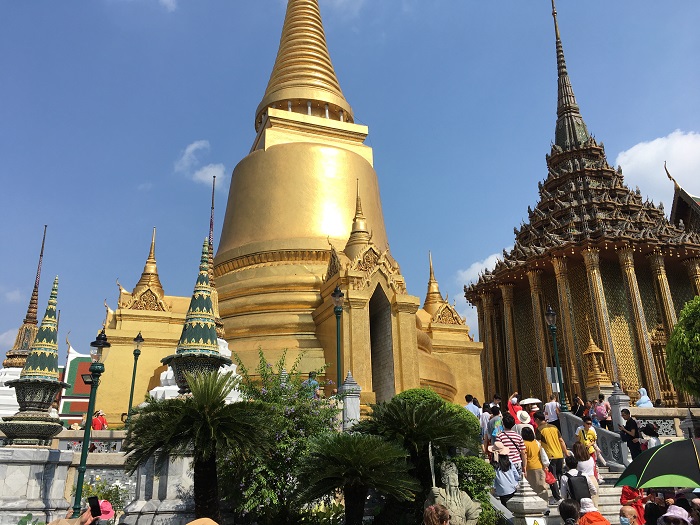
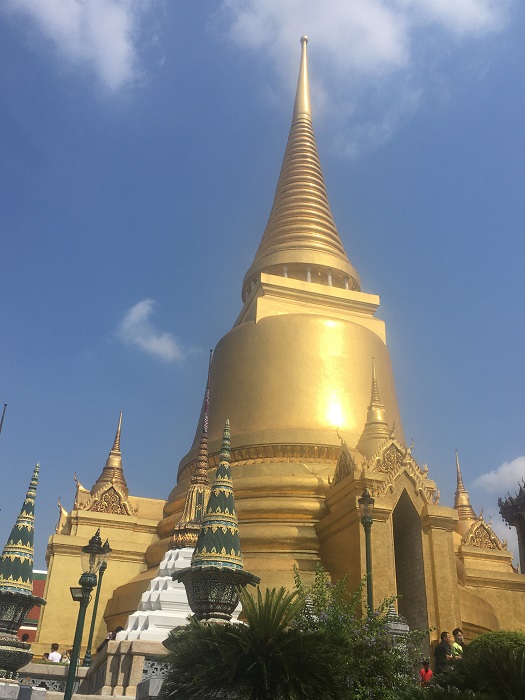
The Temple of the Emerald Buddha is an important pilgrimage destination. The jadeite image of the Buddha in lotus position (the “emerald” title refers to the color) was apparently discovered in 1434. Lightning had struck a chedi in northern Siam (as the kingdom was called until fairly recently), revealing a Buddha statue covered in plaster. The plaster started peeling, to reveal the beautiful green stone, carved all in one piece, about 26 inches tall. The king then wanted it and sent a caravan of elephants to retrieve it. According to legend, the elephant carrying the statue refused to follow the rest in the determined route to the then-capital of Chiang Mai, and turned instead toward Lampang. This was taken as a sign, so a shrine was built there to house it. Since then, it has been moved many times, finally brought to Bangkok by King Rama the First, where he built this impressive wat and temple to house it in 1785.
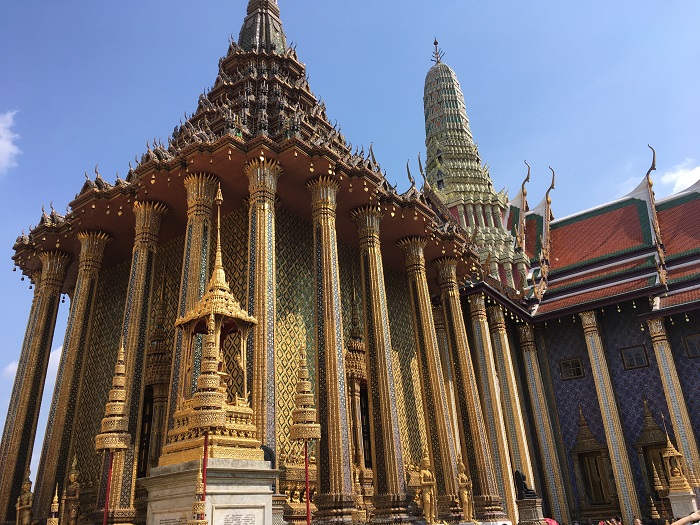
Two golden guards flank the entrance (above).
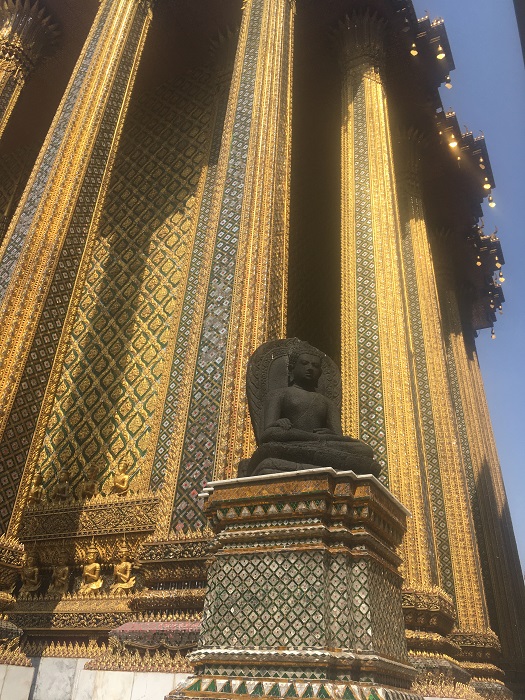
We removed our shoes to enter. Visitors aren’t allowed to take photos inside the temples, so here are a couple of images from Wikimedia. The statue in the high niche looks very small among the elaborate surroundings:

The statue is reverently dressed in one of three different outfits, depending on the season. This image shows the rainy season attire:
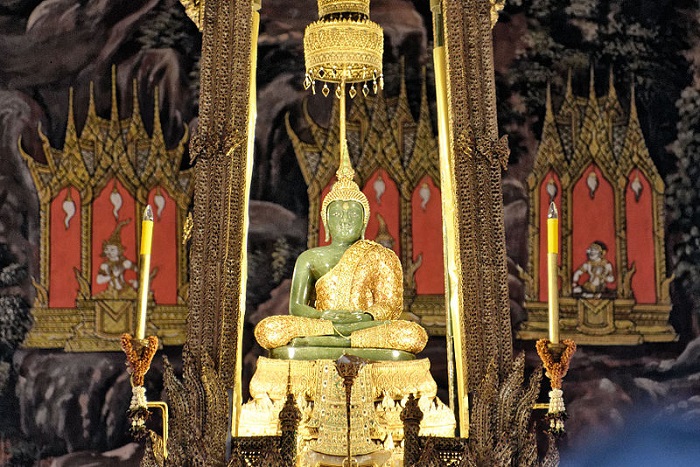
Outside again, we admired details of the elaborate decorations on the building.
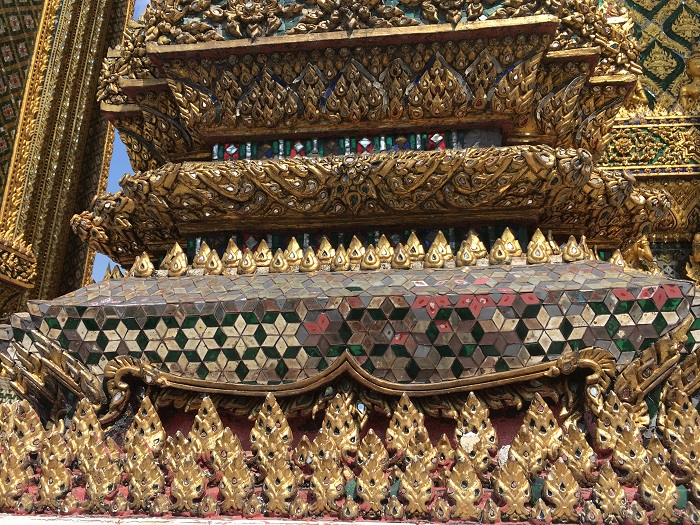

112 garudas (the half-man, half-bird creatures) line the base of the temple, holding serpents called nagas. You can spot them below, at the level where the man in white shirt is standing.
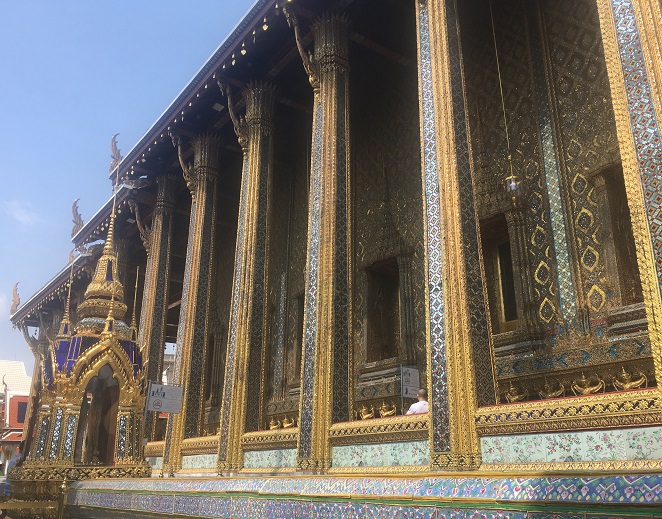
Another type of guard statue, with strong Chinese influence, in the garden beside the temple:
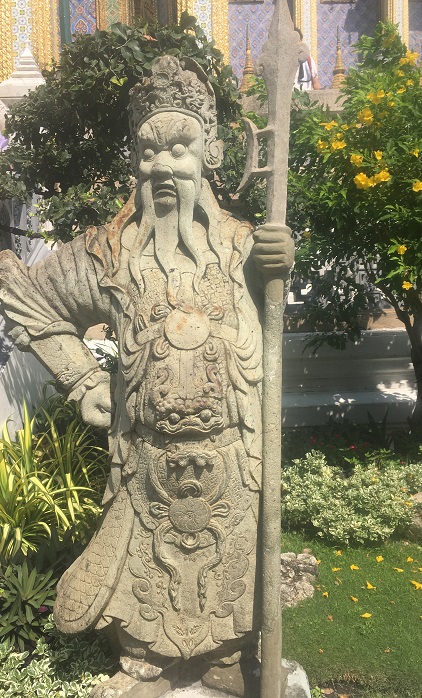
In a pavilion beside the temple (below, right), Buddhist monks received donations and tied protective bracelets on our wrists. I seemed to pass muster with my pareo wrap and now my new bracelet on right wrist:
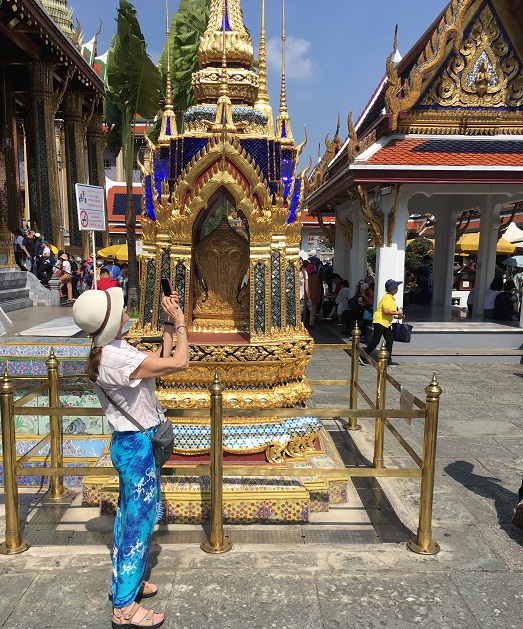
The heat and thirst are getting to me now, too, so we’ll take a break until next Saturday, when we’ll continue with the royal palace and Wat Arun.
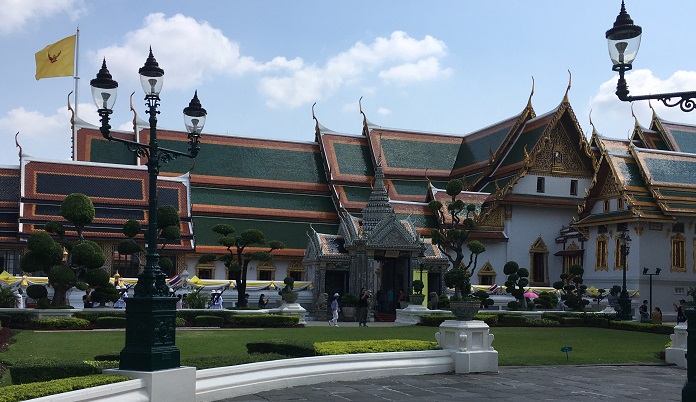
*****
You will find The Rambling Writer’s blog posts here every Saturday. Sara’s latest novel from Book View Café is available in print and ebook: The Ariadne Connection. It’s a near-future thriller set in the Greek islands. “Technology triggers a deadly new plague. Can a healer find the cure?” The novel has received the Chanticleer Global Thriller Grand Prize and the Cygnus Award for Speculative Fiction. Sara has recently returned from another research trip in Greece and is back at work on the sequel, The Ariadne Disconnect. Sign up for her quarterly email newsletter at www.sarastamey.com

1 thought on “The Rambling Writer Visits Thailand, part 3: Wat Phra Kaeo”